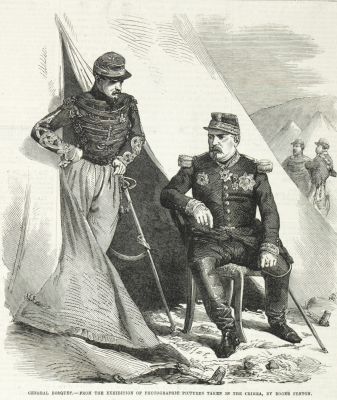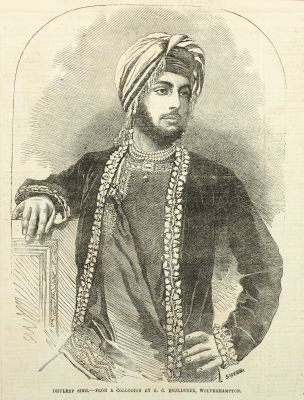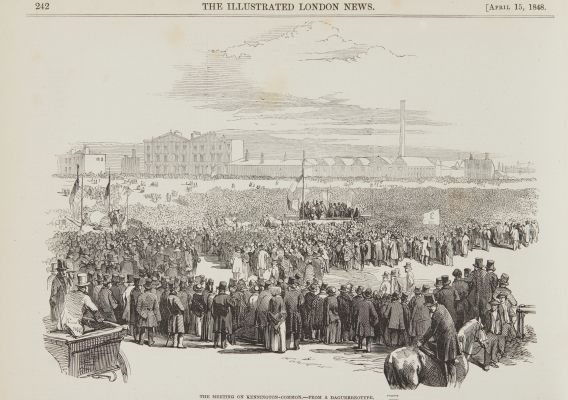
Title
Holiday in the WoodArtist
Robinson, Henry Peach (British, 1830-1901)Publication
The Illustrated London NewsDate
1861Process
Engraving (from photograph)Image Size
24.1 x 33 cm
Print from The Illustrated London News showing "Holiday In The Woods," By H. P. Robinson, in the Photographic Exhibition From the edition of March 16th 1861. A critically acclaimed composite photograph inspired by the Victorian Realist genre paintings of Sir David Wilkie and circle. Over the course of two sunny days in April 1860, Robinson exposed six separate negatives of ten models frolicking in his backyard studio, where he had constructed a fake riverbank from a mound of earth scattered with a few ferns and wild flowers. The ‘river’ is a ditch filled with waste water from his print-washing machine.
Henry Peach Robinson learned photography from Dr. Hugh Diamond’s instructions, which had been printed in the Journal of the Photographic Society. In 1857 Robinson abandoned the bookselling trade and opened a photographic studio, specializing in portraits. Like his friend and colleague Oscar Rejlander, Robinson made combination prints, joining multiple negatives to create a singe image. He adopted a picturesque aesthetic from painting, finding the simplest object to be a worthy subject for artistic rendering. Like many early photographers, Robinson had to give up darkroom work at age thirty-four because of a nervous condition brought on by exposure to toxic photographic chemicals. Robinson continued an active involvement in photography. He wrote the influential Pictorial Effect in Photography, Being Hints on Composition and Chiaroscuro for Photographers, first published in 1868. In 1891 Robinson and several others formed the Linked Ring, a society of photographers who had grown disillusioned by the photographic establishment as represented by the Photographic Society. He eventually succumbed to the poisonous effects of photographic chemicals. [1]
This print is an example of the ‘interpretive’ role that engravers played in translating photographs into ink before the advent of photogravure and other continuous tone processes like the halftone made it an economically feasible endeavor later in the century.
References
[1] Gernsheim, Helmut. The Rise of Photography, 1850-1880: The Age of Collodion. London: Thames and Hudson, 1989. p 44








